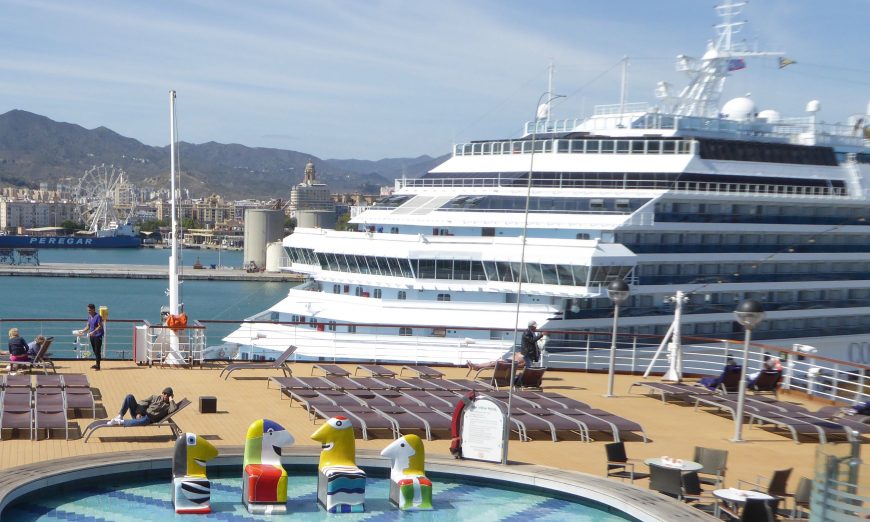Like the irresistible call of the sirens to sailors, the bargain prices of ship repositioning cruises lure travelers to the high seas. Also called relocation cruises, they offer unique adventures and are excellent value for the money for seafarers.
A repositioning cruise is when a cruise line moves its ships from one part of the globe to another, such as from the Caribbean in April to the Mediterranean, to be in place for European spring and summer cruises. To entice people to sign up for the long ocean crossing, the price is reduced on the one-way cruise.
Spring and fall are prime times for trans-Atlantic crossings. On a 15-day Holland America cruise that departed Ft. Lauderdale, Florida, on April 3, it took eight days to cross the Atlantic before reaching the first landfall at Madeira, followed by Lisbon, Portugal, and four stops in Spain, ending in Barcelona. Travelers arranged and paid for their own one-way plane ticket home at the end of the cruise.
The basic cost for three people (crowded when the couch was pulled out to make a third bed) in an outside stateroom with a partially-obstructed view was $120 per day (not per person), plus mandatory tips per person, bar tab and shore excursions. Wi-Fi was an expensive add-on. As with air travel, prices vary.
Eight days at sea (calm except for one day) went by pleasurably for Marge Cooley from Los Angeles, who was on her fifth repositioning cruise.
“Sea days are a perfect excuse to sit back and do nothing,” said Cooley, who attended America’s Test Kitchen cooking demonstrations and lectures by experts on the ports of call.
Sandra and Noah Fuhrman, a retired couple from Lake Worth, Florida, also enjoyed the sea days.
“We just enjoy the cruise, meeting people from all over the country, being catered to, enjoying the food, entertainment, activities and relaxation,” said Noah Fuhrman. “You’re away from the normal, not cooking, cleaning, shopping.”
“The price is reasonable. The cruise line is subsidizing to get the ship to Europe,” said Fuhrman.
Jeanette Jeanneau from Montreal, Canada, agreed.
“You can’t do a regular two-week cruise for the price. It would cost double,” said Jeanneau. “The food is excellent, there’s good entertainment and music every night, a gym and pool.”
“You meet all kinds of nice people if you take open seating,” continued Jeanneau. “Don’t be afraid if you’re single. It’s very secure. You’re surrounded by people all the time.”
Traveling companions Sharon Madigan from Bradenton, Florida, and Bonnie Mirrer from the San Francisco Bay Area were on their first ship repositioning cruise.
“The room stewards are exceptional on the longer cruise,” said Madigan, a veteran of short Caribbean cruises.
While aboard the ship, time is changed gradually, an hour every couple days enroute to the first port of call, so there is no jet lag.
“Even though I had sleeping problems at home, they were cured on the ship — although the more northerly route to Europe might have rougher weather,” said Mirrer, enjoying her first cruise ever. In case of rough seas, Mirrer came prepared with seasickness remedies.
Spring and fall are common times for repositioning cruises as ships crisscross the globe, following the sun. As well as trans-Atlantic crossings, ships travel from Alaska along the coast of California then through the Panama Canal or across the Pacific to Hawaii. Other ships sail between the West Coast and South America or Australia.
An online web search yields a plethora of information sites with facts, opinions and tips for ship repositioning cruises, which are offered year-round to diverse locales for travelers who enjoy the sea journey as well as the destination.
A few helpful sites found in a recent search: www.cruisecritic.com; www.roamingaroundtheworld.com; and www.repositioningcruise.com. Bon voyage!






